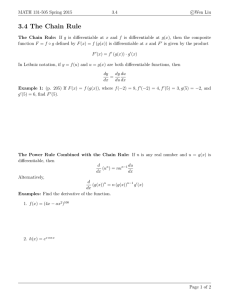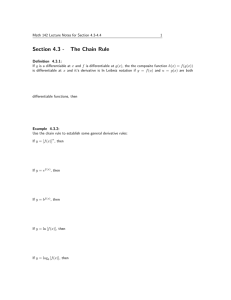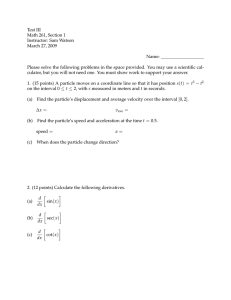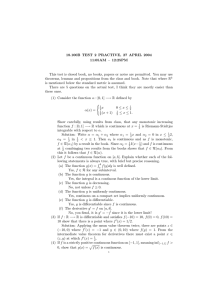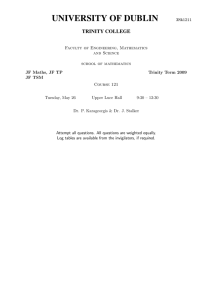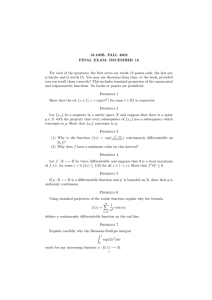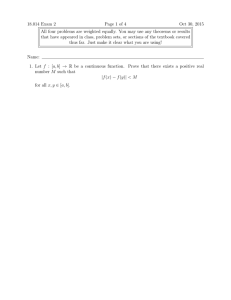Practice Test III Math 261, Section 1 Instructor: Sam Watson March 24, 2009
advertisement
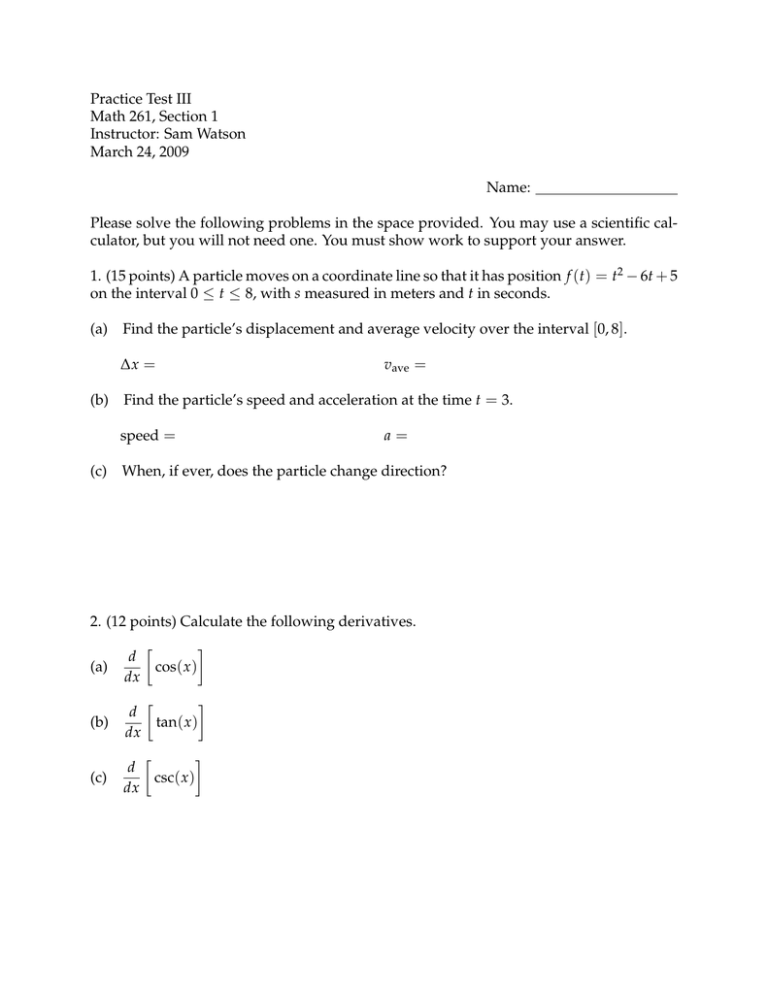
Practice Test III Math 261, Section 1 Instructor: Sam Watson March 24, 2009 Name: Please solve the following problems in the space provided. You may use a scientific calculator, but you will not need one. You must show work to support your answer. 1. (15 points) A particle moves on a coordinate line so that it has position f (t) = t2 − 6t + 5 on the interval 0 ≤ t ≤ 8, with s measured in meters and t in seconds. (a) Find the particle’s displacement and average velocity over the interval [0, 8]. ∆x = (b) vave = Find the particle’s speed and acceleration at the time t = 3. speed = (c) a= When, if ever, does the particle change direction? 2. (12 points) Calculate the following derivatives. (a) d dx (b) d dx (c) d dx cos( x ) tan( x ) csc( x ) 3. (15 points) Calculate the following derivatives. (a) d 20 (4x − 1) dx (b) d √ 3 8x − 1 dx (c) d dx sin(2x2 ) 4. (8 points) For each value of x, identify whether the function shown below is differentiable at that value of x. (Circle “Y” if it is differentiable, and “N” if it is not). In each case, either state why the function is not differentiable, or (if it is differentiable) estimate the derivative. 3 2 1 −2 −1 0 −1 1 2 3 4 5 6 7 −2 −3 −4 −5 −6 x diff? if not, why? if so, estimate. −2 YN −1 YN 0 YN 1 YN 2 YN 3 YN 4 YN 5 YN 5. (10 points) Find the slope of a line tangent to the graph of x2 y2 − x − y + 1 = 0 at the point (1, 1). d2 y 6. (10 points) Find 2 where y is related to x implicitly by the equation dx x3 + y3 = 27. 7. (8 points) A cube-shaped crystal is growing in a cave at a rate of one cubic millimeter per millennium. When the volume of the cube is 1000 cubic millimeters, what is the rate of change of the cube’s edge length (in millimeters per millennium)? 8. (8 points) Suppose you are standing one meter away from a wall, shining a laser beam directly toward the wall in front of you. You begin rotating the laser pointer at a rate of 0.5 radians per second, causing the beam to move across the wall. At what rate is the beam moving after π/3 seconds (in other words when you’ve rotated 60 degrees)? 9. (10 points) Find the linearization L( x ) of the function f ( x ) = √ your answer to estimate 24. L( x ) = √ √ x about x = 25. Use 24 ≈ 10. (4 points) The chain rule says that if g is differentiable at x0 and f is differentiable at g( x0 ), then f ◦ g is differentiable at x0 . Find functions f and g and an x-value x0 for which g is not differentiable at x0 yet f ◦ g is differentiable at x0 . (Hint: try g( x ) = | x |)
